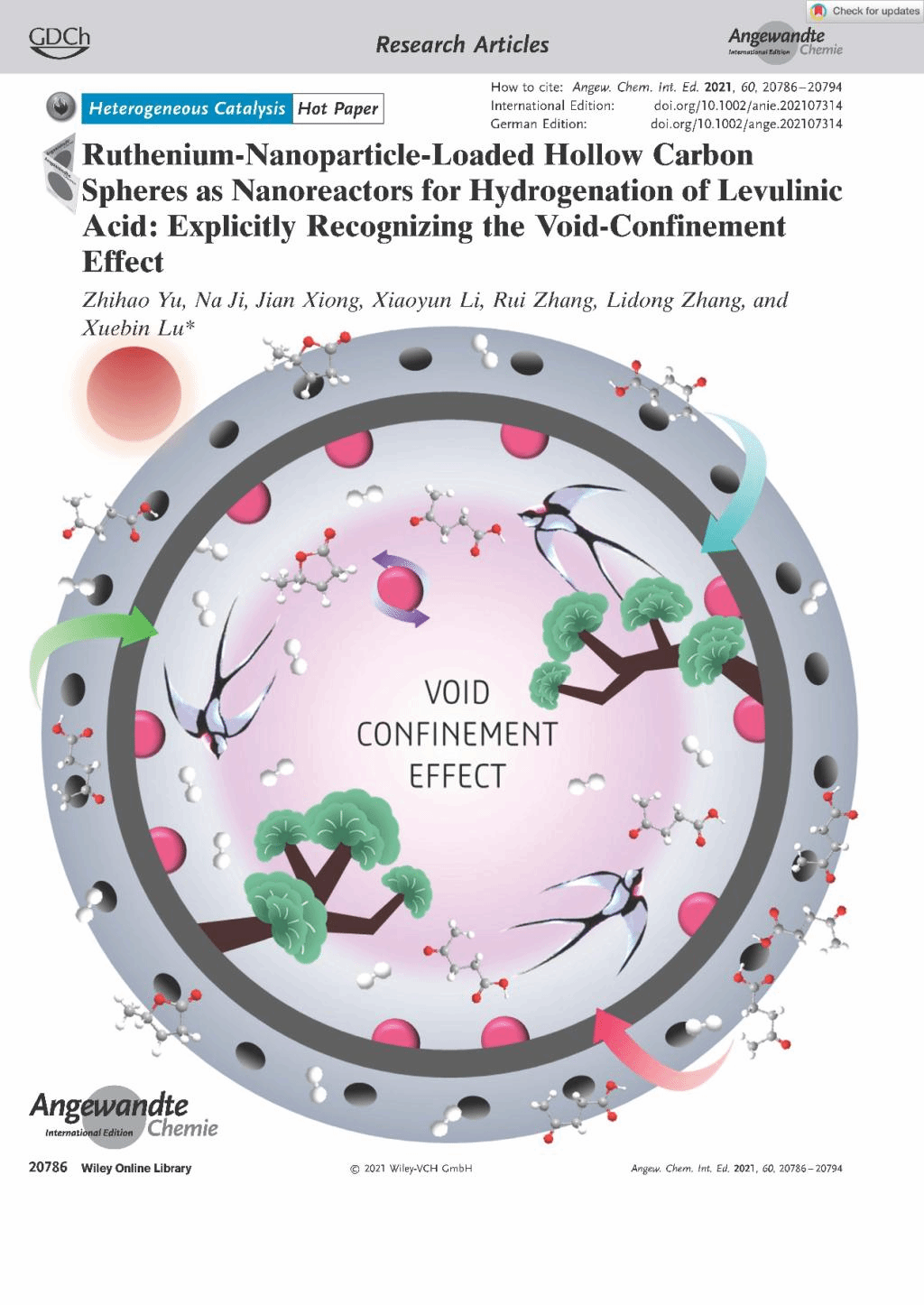Recently, researchers from the School of Environmental Science and Engineering cooperated with peers from Tibet University (School of Science), Sun Yat-sen University (School of Agriculture), University of Science and Technology of China, etc., and published a research article, analyzing the forming mechanism of the void-confinement effect of MHC nanoreactors with hydrogenation of biomass-derived levulinic acid as the probe reaction.
As a type of typical man-made nanoreactors, metal-loaded hollow carbon nanostructures (MHC nanoreactors) have exhibited significant structural superiorities in the field of energy catalysis due to their adjustable microenvironment effects. Through accurately controlling the key structural parameters of MHC nanoreactors, researchers can directionally modulate its hollow microenvironments at a nanoscale to achieve specific reaction purposes. The void-confinement effect is considered to be one of the basic microenvironment effects conducive to the improvement of catalytic performance. Although many investigations have offered sufficient experimental evidences on the enhancement of catalytic efficiency prompted by void-confinement effect, the forming mechanism of the void-confinement effect has not been clearly interpreted.

The research found that the void-confinement effect of the selected MHC nanoreactors is essentially driven by an integrating action of electronic metal-support interaction, reactant enrichment and diffusion, which are mainly ascribed to peculiar properties of hollow nanoreactors both in electronic and structural aspects, respectively. This work offers a distinct case for interpreting the catalytic behaviour of MHC nanoreactors, which could potentially promise broader insights into the microenvironment engineering strategies of hollow nanostructures.
The above research has been published online in the international journal of Angewandte Chemie International Edition. The first author is Zhihao Yu, a doctoral student from School of Environmental Science and Engineering, Tianjin University. At present, the above article has been selected as Hot Paper by the Editorial board of Angewandte Chemie International Edition and also successfully highlighted as the Frontispiece Article.
Angewandte Chemie International Edition is an international top journal in the area of Chemical Science, with an impact factor of 15.336, which was rated to be Q1 (Top Journal) by the Scientific Metrology Center of Chinese Academy of Sciences. The publication scope of this journal covers the whole field of chemical research, and usually only reports cutting-edge researches with high originality and significance. In addition, this article has been widely reported by many scientific WeChat accounts, such as, Science Wengu Agency, X-Mol, Catalysis Strategy, Nano Man, etc.
Article link:https://doi.org/10.1002/anie.202107314
By Yu Zhihao from the School of Environmental Science and Engineering
Editor: Eva Yin






